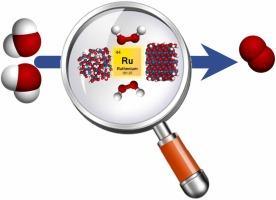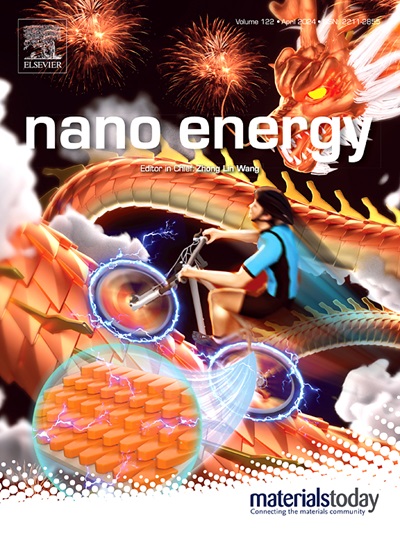Revisiting the ruthenium oxide-based water oxidation catalysts in acidic media: From amorphous to crystalline
IF 16.8
1区 材料科学
Q1 CHEMISTRY, PHYSICAL
引用次数: 0
Abstract
Ruthenium oxides (RuO2) are benchmark electrocatalysts for the oxygen evolution reaction (OER) in water splitting (2 H2O → O2 + 4 H+ + 4e–), but their catalytic activity and stability vary significantly among amorphous, crystalline, and hydrated forms. In this work, we explored the structure-performance relationships of various RuO2 electrocatalysts using a combination of techniques. Cyclic voltammetry revealed that the redox behavior and adsorption energies of key intermediates (*OH and *O) differ based on the crystallinity and particle size of RuO2. Hydrogen peroxide (H2O2) as a probing molecule indicated that the interaction strength of the *OOH intermediate is stronger on amorphous and low-crystallinity RuO2 than on highly crystalline RuO2. Furthermore, in-situ techniques, including electrochemical attenuated total reflectance surface-enhanced infrared absorption spectroscopy (ATR-SEIRAS), electrochemical-quartz crystal microbalance (QCM), and Raman spectroscopy, showed that amorphous RuO2 hydrate exhibited higher OER activity but lower stability, while highly crystalline rutile RuO2 was more stable up to 1.6 V but had weaker intermediate adsorption. These findings provide a clear understanding of how structural differences impact the catalytic performance and stability of RuO2 electrocatalysts, offering guidance for optimizing OER catalysts.

求助全文
约1分钟内获得全文
求助全文
来源期刊

Nano Energy
CHEMISTRY, PHYSICAL-NANOSCIENCE & NANOTECHNOLOGY
CiteScore
30.30
自引率
7.40%
发文量
1207
审稿时长
23 days
期刊介绍:
Nano Energy is a multidisciplinary, rapid-publication forum of original peer-reviewed contributions on the science and engineering of nanomaterials and nanodevices used in all forms of energy harvesting, conversion, storage, utilization and policy. Through its mixture of articles, reviews, communications, research news, and information on key developments, Nano Energy provides a comprehensive coverage of this exciting and dynamic field which joins nanoscience and nanotechnology with energy science. The journal is relevant to all those who are interested in nanomaterials solutions to the energy problem.
Nano Energy publishes original experimental and theoretical research on all aspects of energy-related research which utilizes nanomaterials and nanotechnology. Manuscripts of four types are considered: review articles which inform readers of the latest research and advances in energy science; rapid communications which feature exciting research breakthroughs in the field; full-length articles which report comprehensive research developments; and news and opinions which comment on topical issues or express views on the developments in related fields.
 求助内容:
求助内容: 应助结果提醒方式:
应助结果提醒方式:


